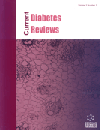
Full text loading...
We use cookies to track usage and preferences.I Understand
The onset of diabetes mellitus (DM), a metabolic disorder characterized by high blood glucose levels and disrupted glucose metabolism, results in 20% of people with diabetes suffering from diabetes-related wounds worldwide. A minor wound, such as a cut or abrasion, can lead to infections and complications in diabetic patients. We must understand the mechanism/s contributing to this delayed wound healing to develop effective prevention strategies. The potential benefits of bioactive phytochemicals for diabetic wound healing have been reported in numerous studies.
A bioactive compound may have multiple actions, including antioxidants, anti-inflammatory, antimicrobial, and angiogenesis. Compounds derived from these plants have shown promising results in wound healing, inflammation reduction, collagen synthesis, and neovascularization improvement.
Consequently, this review provides an update to our understanding of how phytoconstituents promote wound healing in diabetics. A thorough literature review was conducted on diabetes, wound healing, and phytoconstituents for this study. Only English publications until June 2023 were included in the search, which used multiple search engines and the main keywords. Summing up, phytochemical-based interventions might improve the quality of life for diabetics by improving wound healing.
However, to fully understand the efficacy and safety of these phytochemicals in managing diabetic wounds, more research and clinical trials are needed.

Article metrics loading...

Full text loading...
References


Data & Media loading...
Supplements

